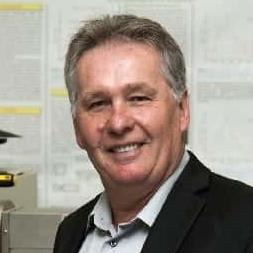Laser Plasma Spectroscopy Applications
A special issue of Atoms (ISSN 2218-2004).
Deadline for manuscript submissions: closed (30 September 2019) | Viewed by 62337
Special Issue Editors
Interests: laser-induced plasma; atomic spectroscopy; molecular spectroscopy; time-resolved spectroscopy; determination of plasma parameters; nano-particle enhanced plasma diagnostics; astrophysical applications; experimental and theoretical and computational plasma physics; ultra-short plasma diagnostics; laser ablation; laser-induced breakdown spectroscopy; shock waves; plasma dynamics; analytical plasma chemistry; combustion
Interests: femto- and subfemto- second laser-matter interactions; computational modeling; laser spectroscopy fundamentals; laser and light scattering diagnostics; radiation transfer; equilibrium and non-equilibrium fluid physics; spectroscopic imaging
Special Issue Information
Dear Colleagues,
It is my pleasure to contribute towards the publication of an MDPI Atoms Special Issue on laser plasma spectroscopy and applications. Such a feature issue is timely considering the recent technological advances in laser devices and instrumentation for plasma diagnostics. High peak power radiation generates sufficient laser plasma for analytic atomic and molecular spectroscopy with a variety of scientific interests.
The plasma may be induced by laser radiation, however, spectroscopy of plasma offers key advantages. First, optical characterization can be performed in-situ under non-destructive and non-invasive (i.e., non-contact, respectively surface-contact) conditions. The minimal interaction with the test object will preserve the integrity of the object. Second, it can provide dynamical behavior based on the spectroscopic features that usually are explored with time-resolved methods, including emission spectroscopy or pump-probe techniques, to name two examples. Third, the optical systems can be made portable, operating on battery power alone, with no direct requirements for main power.
For this Special Issue the following topics are invited for contribution as original research and theoretical papers, but not limited to:
- High resolution, broad band, optical analysis and characterization
- Analysis of the constituents in solid-state materials
- Time-resolved pump-probe measurements
- Nonlinear spectroscopy and imaging, including: multiphoton fluorescence, second and third harmonic generation, et c.
- Optical characterization and chemical composition analysis of liquid and gas phases of constituents of a medium
- Spectroscopy to elucidate combustion and plasma physics
- Diagnostics of chemical processes and phenomena
- Spectral imaging, including nanoparticle-enhanced spectroscopy
The overall aim of this feature issue is a healthy distribution of contributed research and invited, review-type papers that expand on the fundamentals and novel results of particular spectroscopy applications. The feature issue is envisioned to provide both review and current state-of-the-art research engagements of various groups around the globe.
Prof. Dr. Christian Parigger
Prof. Dr. Robert Splinter
Guest Editors
Manuscript Submission Information
Manuscripts should be submitted online at www.mdpi.com by registering and logging in to this website. Once you are registered, click here to go to the submission form. Manuscripts can be submitted until the deadline. All submissions that pass pre-check are peer-reviewed. Accepted papers will be published continuously in the journal (as soon as accepted) and will be listed together on the special issue website. Research articles, review articles as well as short communications are invited. For planned papers, a title and short abstract (about 250 words) can be sent to the Editorial Office for assessment.
Submitted manuscripts should not have been published previously, nor be under consideration for publication elsewhere (except conference proceedings papers). All manuscripts are thoroughly refereed through a single-blind peer-review process. A guide for authors and other relevant information for submission of manuscripts is available on the Instructions for Authors page. Atoms is an international peer-reviewed open access monthly journal published by MDPI.
Please visit the Instructions for Authors page before submitting a manuscript. The Article Processing Charge (APC) for publication in this open access journal is 1500 CHF (Swiss Francs). Submitted papers should be well formatted and use good English. Authors may use MDPI's English editing service prior to publication or during author revisions.
Keywords
- laser-induced plasma
- atomic spectroscopy
- molecular spectroscopy
- time-resolved spectroscopy
- determination of plasma parameters
- nano-particle enhanced plasma diagnostics
- astrophysical applications
- theoretical plasma phenomena modeling
- ultra-short plasma diagnostics
- laser ablation
- laser-induced breakdown spectroscopy
- shock waves
- plasma dynamics
- analytical plasma chemistry
- combustion
Benefits of Publishing in a Special Issue
- Ease of navigation: Grouping papers by topic helps scholars navigate broad scope journals more efficiently.
- Greater discoverability: Special Issues support the reach and impact of scientific research. Articles in Special Issues are more discoverable and cited more frequently.
- Expansion of research network: Special Issues facilitate connections among authors, fostering scientific collaborations.
- External promotion: Articles in Special Issues are often promoted through the journal's social media, increasing their visibility.
- Reprint: MDPI Books provides the opportunity to republish successful Special Issues in book format, both online and in print.
Further information on MDPI's Special Issue policies can be found here.






